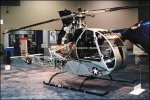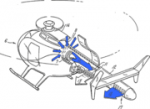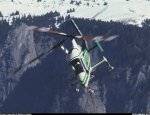barnstorm2
Platinum Member
- Joined
- Nov 1, 2003
- Messages
- 14,573
- Location
- Cincinnati, Ohio
- Aircraft
- 2-place Air Command CLT SxS (project), & Twinstarr Autogyro
- Total Flight Time
- 750+hrs and climbing
Does anyone know the name (or type name) of the helicopter that ducted the turbine through the boom to replace the tail rotor?
.
.





